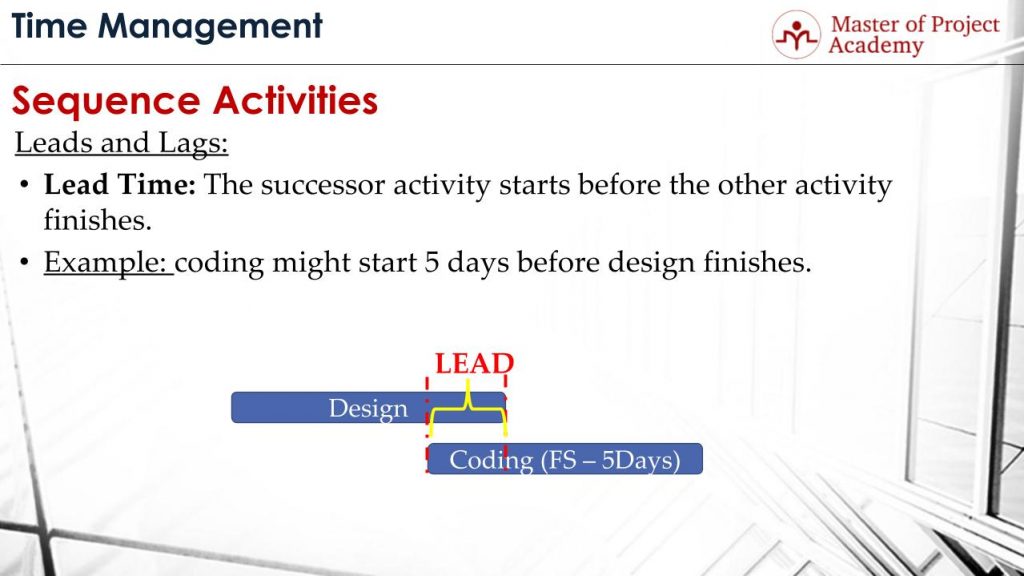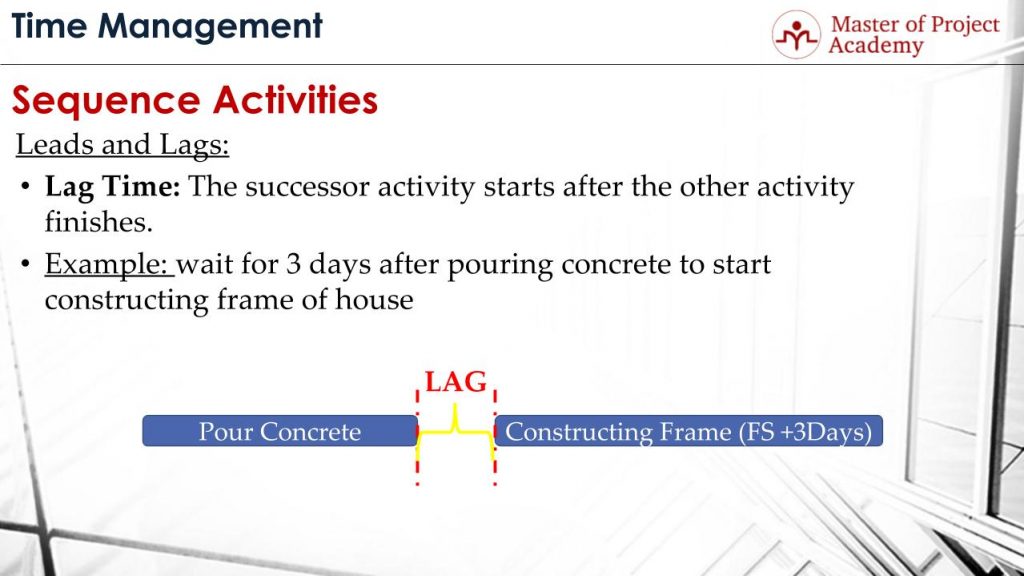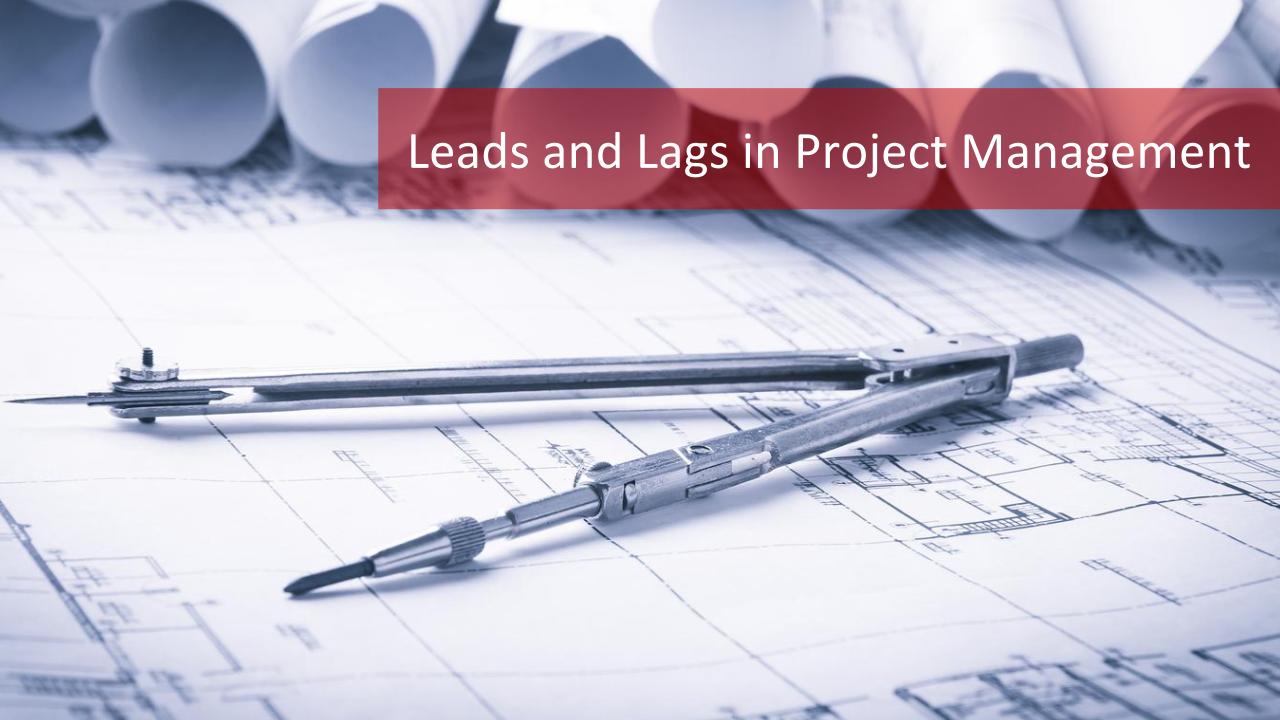During Sequence Activities process which is the third process of Time Management, the activities of a project are sequenced and a Network Diagram is created. The most common method for creating a Network Diagram is Precedence Diagramming Method which is abbreviated as PDM. When sequencing the activities the relationships and dependencies between the activities should be kept in mind. Because as explained in PMP certification training, some of these activities are depending on each other. Leads and lags are another kinds of dependencies between project activities.
Attend our 100% Online & Self-Paced One-Hour Free PMP Training.
So that makes Leads and Lags important terms in project management. Let’s go over these concepts and give some examples for these terms. In various PMP exam questions, you may encounter these leads and lags so when you are practicing with a realistic PMP practice exam you will most probably have questions about leads and lags as well.
The Definitions of Leads and Lags
Let’s define leads and lags now and also give some real-life examples of leads and lags.
What is Lead Time?
Lead time refers that the successor activity depending on the previous activity will start before the previous activity finished.

Let’s consider a software development project. Coding of software development of a screen or function might start before its technical design finished. Technical designs of a screen or function in a software project will describe how the screen will be developed, buttons that will be on the screen, services it will use etc. If the technical design takes 20 days, after 15 days, most of the details about the technical design can be completed and the software developer can start to the development of the screen with the certain parts. This will help to shorten the duration of the project since you will not wait to finish all design.
In this scenario, these 5 days’ time that will be before the design finishes when the development starts is called as lead time.

What is Lag Time?
Lag time refers to the time that will pass before the successor activity starts. Let’s consider a construction project. in order to start the construction, concrete will be prepared and poured on the foundations of the building. But generally, after this concrete is poured, construction of the frame starts after a time, in our case after 3 days. This is mainly because for ensuring the hardening of the concrete for a safer construction.

In this scenario, these 3 days’ time that will be between the pouring the concrete and constructing the frame is called as lag time.
We explored what are leads and lags in project management. Briefly, leads and lags are two types of timing dependencies of project activities.
Review by: Miguel Morris


